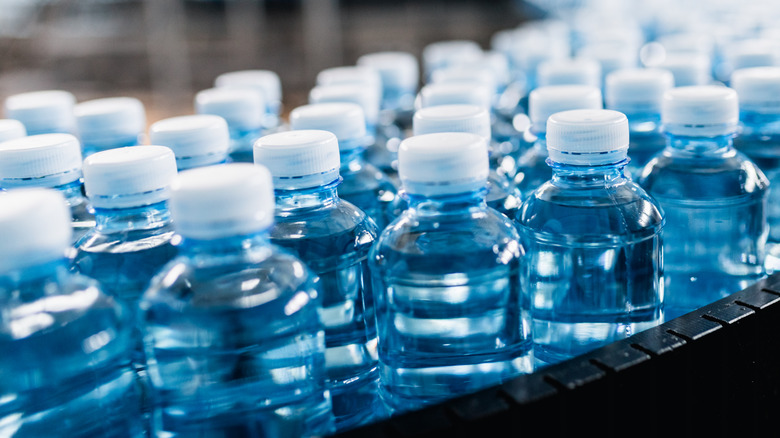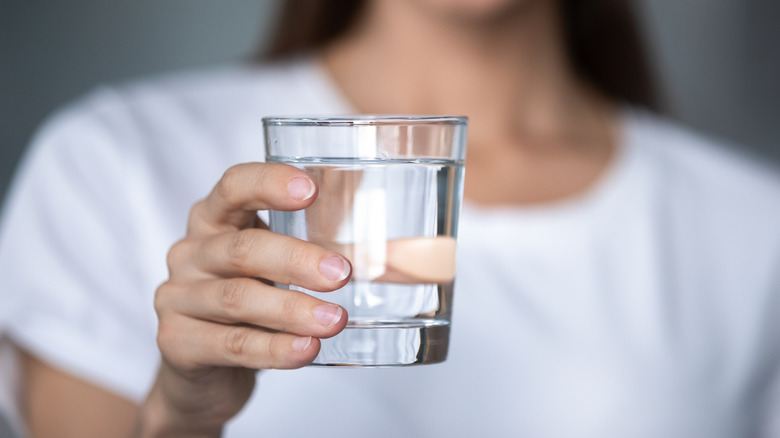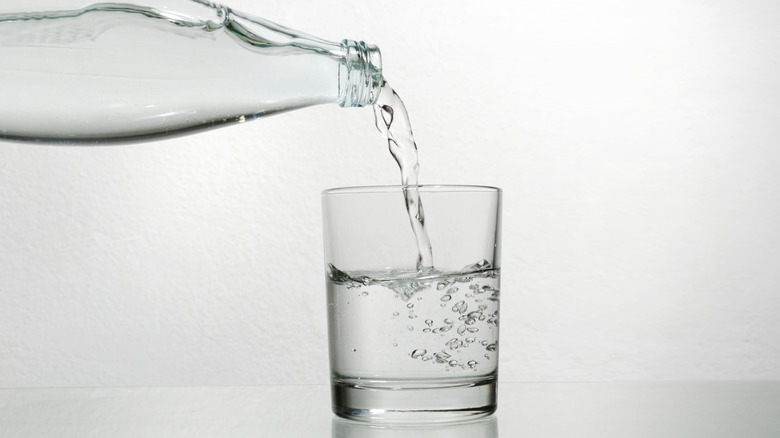What The 'Purified' Label Actually Means For Bottled Water
We all know it's vital to stay hydrated, and that it's a smart move to drink water first thing in the morning as well as throughout the day. That has led more of us to increasingly choose to drink bottled water over tap, with Americans consuming 15.9 billion gallons of the stuff in 2022, the largest amount ever sold in the States (via Statista).
But, with different descriptions on the labels, including purified, distilled, spring, and mineral, is all bottled water equal? And how do you know what's actually inside? Because, excuse the pun, it isn't always clear. Spring, mineral, and distilled water are fairly straightforward. Spring water comes from a natural spring (or underground source) while mineral water can only be labeled as such if it naturally contains a certain amount of dissolved minerals (at least 250 parts-per-million, to be precise).
For distilled water, it must go through the process of distillation, which means it's boiled until it evaporates, when the steam is condensed into clean water that's so pure it can even be used in laboratory experiments. Purified water, which can come from a spring, groundwater source, or even from the tap originally, goes through one of a number of specific processes to remove more contaminants than simple filtration is able to (though fewer than distillation) before being bottled. But these purifying processes can also remove some of the beneficial minerals found in water, too.
How and why is water purified?
A number of impurities and contaminants, including chemicals, metals, minerals, and bacteria, can be naturally present in water. While the precise quality of tap water depends on where you live, the Environmental Protection Agency's guidelines regarding drinking water in the United States sets legal limits on over 90 contaminants. When you see 'purified' on a bottle, it means that the water has been treated, so that around 99% of these impurities are removed. There are a number of ways that water can be purified, with processes including distillation, deionization, and reverse osmosis.
The problem is, not all of these so-called impurities are dangerous. In fact, some are beneficial and are classed as essential minerals, such as potassium, magnesium, sodium, and calcium. Fluoride, a mineral considered beneficial for dental health, is also removed when water is purified. These minerals also affect the flavor (yes, water does have a taste), and some brands may even add some minerals back in after the filtration process to make it more palatable.
So, although it may sound good on the label, purified water may in fact be lacking some of the nutritional attributes and even the taste of other types of water. And considering that purified water may actually originally be tap water, albeit water that has undergone processing, you may feel that it does not quite justify the price tag that it can sometimes command.
Look at the source of bottled water for more insight
With 99% of contaminants removed, purified water can certainly have a cleaner taste than some other kinds of water. But, given that purified can refer to water that has most likely originally come from groundwater or tap water, to really understand what's in the bottle you need to look beyond the descriptive terms. Rather, take a look where the water originates from — specifically, is it from a natural source?
If you're keen to keep the minerals in your water, whether for nutritional value or for taste, then water labeled as mineral water naturally contains a minimum level of them. And manufacturers can't just add them into the water during processing, as sometimes happens when purified water is remineralized; mineral water must naturally contain the elements to be labeled as such.
With no added chemicals, and without having undergone any processing or treatments, natural spring water originates, as the name suggests, from a natural spring or sometimes a natural underground source. As such, many people believe it's naturally pure bottled water. But essentially, it pays to read the label carefully when you're shopping. Because purified water may not actually be the 'purest,' depending on what you're looking for in a bottle of water.



